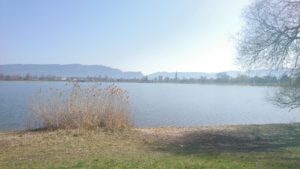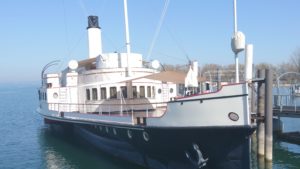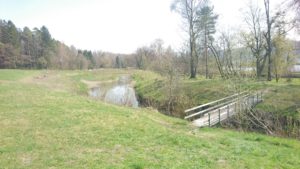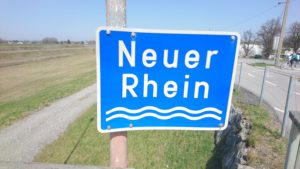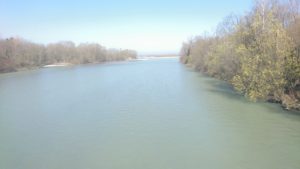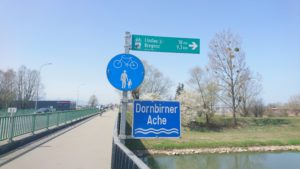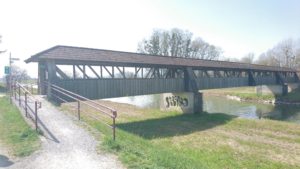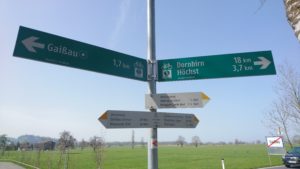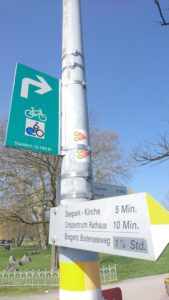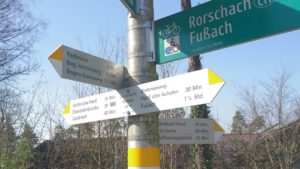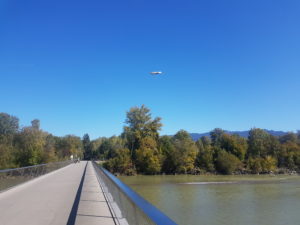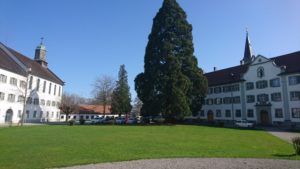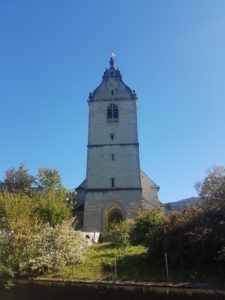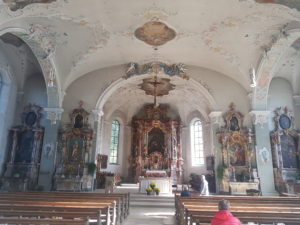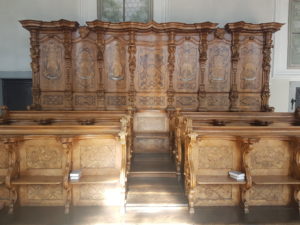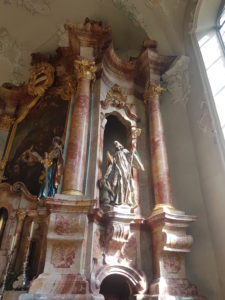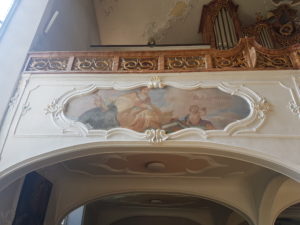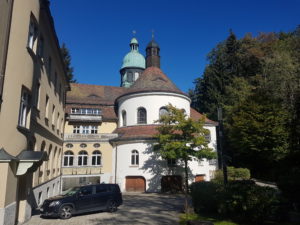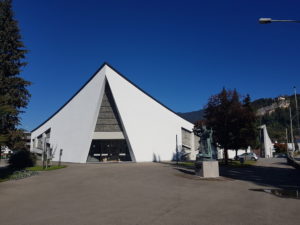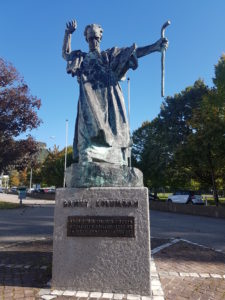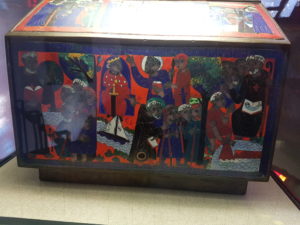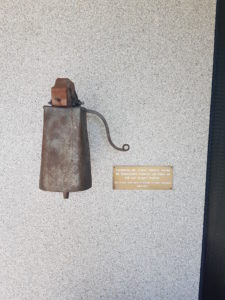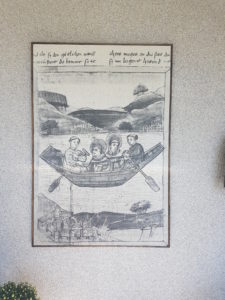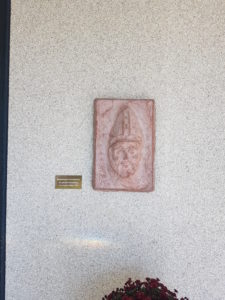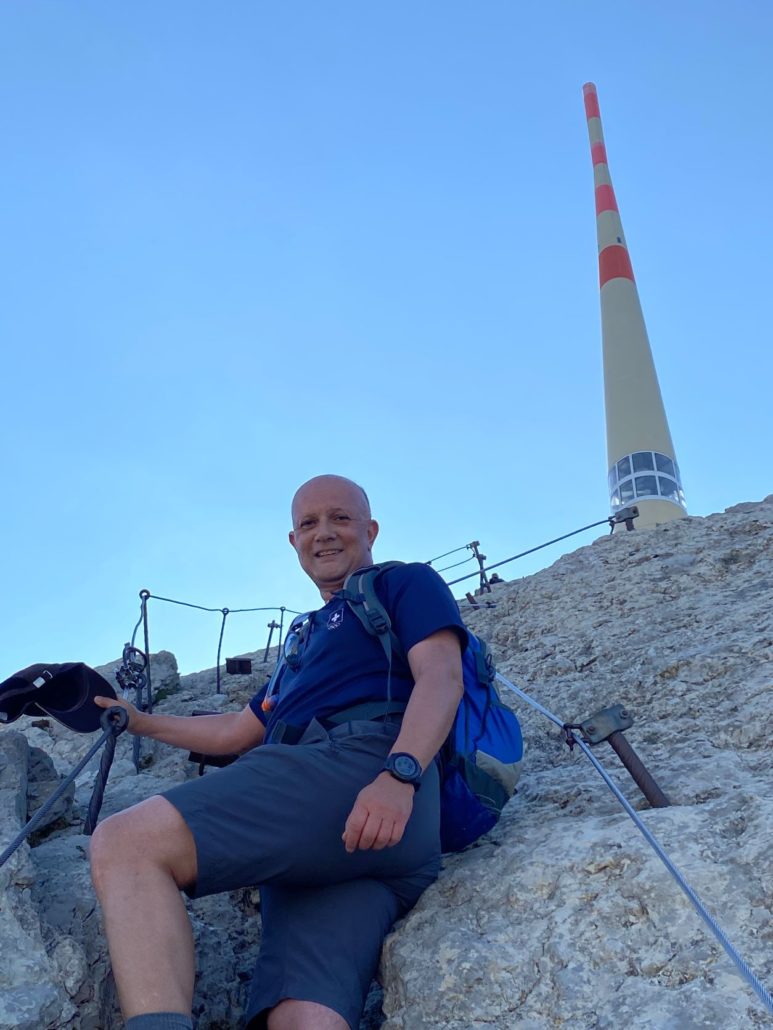From Rorschach there are two possible ways to get to Bregenz: by boat or on foot. Although it’s quite a long walk there, the countryside is beautiful along the lake and it is quite a simple walk. On the other hand, you can take the boat to Rheineck and from there walk the rest of the way. This way the trail is 11 kilometers shorter.
Worth seeing and knowing
| Km 10 | Before the Gotthard Pass was opened, Rheineck was an important trading and storage center on the north-south axis. The historical town, with its many interesting sights in the Old Town (Town Hall, former administration building which housed the public advocate’s offices, Baroque buildings with attic windows and lavish Rococo interior structures, the Protestant St James‘ Church, and so on), is situated on the old Rhine. This branch of the river, which was previously the actual Rhine, forms the border with Austria.
We cross over the old Rhine and reach Gaissau in the Vorarlberg on the Austrian side. We continue as far as the shore of the lake to Fussach (first mentioned in the tax register of the Pfäfers Monastery in 840). |
| Rheindelta: The Alpine Rhine was straightened by the International Rhine Regulatory Authority and wedged between two dams. The once wild river was thus ‘tamed’ on its course directly to the Lake of Constance and the danger of regular flooding was averted. In 1900 the diversion was completed in Fussach. The old arm of the river (the Old Rhine) was diverted to the newly designed Rhine Valley Inland Canal from 1896 to 1906, which drained away water from the St Gallen Rhine Valley and parts of Appenzell into the Lake of Constance. The Rheindelta Nature Reserve extends from between the mouths of the Old and New Rhine. In 2003, the 2’066 hectare-large Rheindelta was included in the list of the EU’s Natura-2000 protected regions because of its most invaluable species, habitat, and preservation of the biological biodiversity. | |
| Km 19 | We now cross over the New Rhine.
Hard. Around 700 AD the first Allemanni settlers arrived here an in 1249 Hard was documented for the first time in a charter from Pope Innocent IV to the Mehrerau Monastery |
| Km 26 | Mehrerau Monastery. In 1097 the foundations were laid for the building of the church which was completed in 1125. In 1805, Bregenz came under the control of the Kingdom of Bavaria, and the Monastery was abolished and plundered, the baroque Church was destroyed and the Convent was used as a factory and barracks.
After 1850 the Monastery was inhabited again and with the approval of Emperor Franz Joseph, it became a refuge for the Cistercians from the Wettingen Monastery in the Canton of Aargau, Switzerland, which had closed down. In 1854 the Abbey was reopened under the name Wettingen-Mehrerau“. |
| Km 31 | Bregenz. Today’s destination. The first settlements in this area were formed around 1500 BC. During the Celtic period (from about 500 AD) Bregenz was one of the strongest fortified places in the region. At that time the Brigantier (Bregenz) Celts settled in Vorarlberg.
In 15 BC the Romans conquered the Vorarlberg region and set up here the town Brigantium, a Roman civilian town with a Forum, a temple precinct, market halls, temples, etc. From this period, numerous archaeological artifacts remain. In the Protestant Cemetery, the remains of the walls of the imperial baths are visible. Brigantium was also important militarily. The Prefect of the Roman Lake of Constance Navy had his headquarters here. Until at least 410 AD Brigantium had a Roman war fleet stationed here. While building works were being carried out the remains of the harbor came to light. In 233 and 259/260 AD Bregenz was destroyed by attacking Allemanni but was rebuilt by the Roman-Celtic population. The Upper Town was expanded and fortified. The fortress remained militarily important after 300 AD and together with Arbon, Constance, and Eschenz, it belonged to a chain of fortifications that secured the Roman Rhine and Lake of Constance borders. The Allemanni populated the area around Bregenz in about 470 AD. Between 610 and 612 the Irish missionaries Columban and Gall were active here. From here Columban continued with the monks towards Italy, while Gall stayed behind and was drawn to Columban’s unwillingness. This prohibited Gall from reading the mass until Columban’s death. The modern Roman Catholic Parish Church of St Columban. Both churches, the church of St Gall as well as the church of St Columban lie on the way the next day and can then be visited. The modern Catholic Parish Church of St Columbanus stands in the Rieden area of the town. A cable car leads up to the Pfänder Hill with its wonderful views, among them neighboring Lindau. Bregenz is especially famous for its Summer Music Festival which is held on the lakeside stage. |










